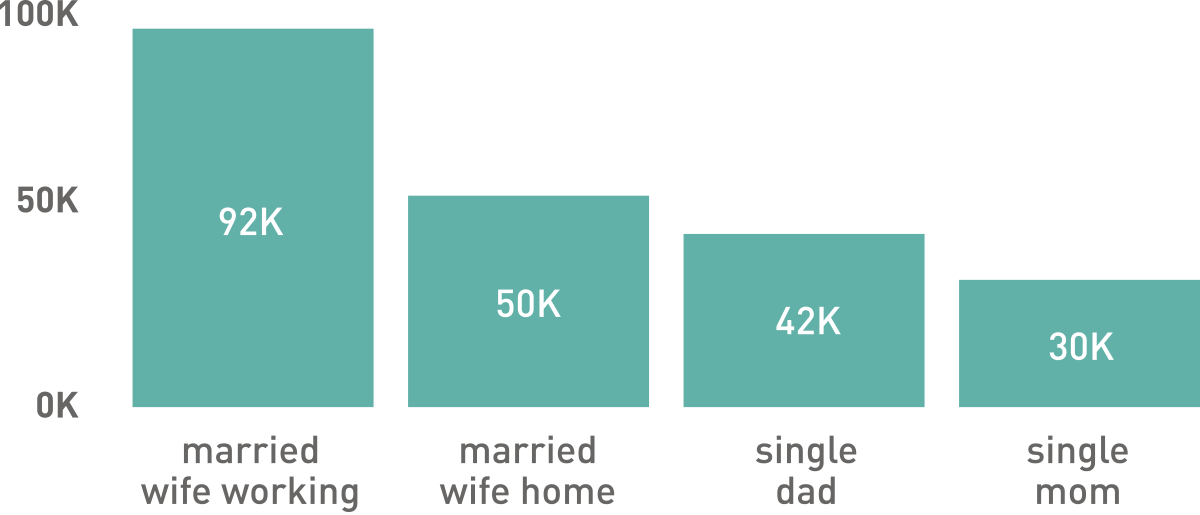Scenario 1
Sports marketing evolves to focus more on women, making up for the decline in middle-class wealth by successfully building the upper-middle-class professional female fanbase. Later, developed countries adopt “basic income” programs to offset the job displacement caused by widespread automation of service jobs.
Scenario 2
Sports teams and leagues fail to field affordable on-site offerings for the bottom 90% of their fanbases’ earners, and live attendance at games declines steeply.
-
01
Rapid innovation in robotics and artificial intelligence
-
02
Growing wage disparity, increased concentration of wealth
-
03
Three billion new potential sports fans joining the global economy in the next five years
DisruptionSome futurists predict that by 2030 over 2 billion jobs will disappear thanks to automation. Driverless cars will wipe out taxis and delivery vehicle drivers, as well as staff for parking lots, traffic courts, and traffic police departments. Kiosks, smart vending machines, and scanners are eliminating cashiers. Robots are replacing farm hands, fast-food preparers, and soldiers. Teachers will be lower paid as education gets disrupted by online courseware. | OpportunityNear-term Longer-term |
Teams and leagues looking to grow their female fanbases will have to go beyond gimmicks like pink jerseys. It has to be based on empathy and true engagement. Women care about family — the smarter leagues will be looking at ways that sports can bring families together. Women want positive role models for their daughters, but networks are resistant to showing women’s sports highlights. Leagues that want more female fans should get people to capture and share amazing plays by women on social media. There are so many examples of women kicking ass in sports — be the league that helps them get it out there. And in a lot of cases, women haven’t spent as much time with a sport as men have. So use technology — immersive virtual reality or augmented reality — to help women school up fast.
Carin Watson
Managing Director, Corporate Innovation and EVP, Business Operations, Singularity University
Quite possibly, we could experience massive shifts in women’s sports consumption in the course of the next three to four decades
Andrei Markovits
Author of Sportista
I think it’s likely that the pace of job automation will outstrip job creation in the short term and cause a lot of unemployment and underemployment. In the Industrial Revolution you could jump off of any unskilled labor job, take some courses, learn some new skills, and find a new, likely higher paying job. What’s different this time is that we now have AIs and machine learning algorithms that can replicate many of the cognitive skills these individuals would be pursuing, and they can do it much faster. In many winning cases, we will see people partnering with AI and robotic systems to deliver productivity not possible with artificial intelligence or humans alone.
Neil Jacobstein
Henry Crown Fellow, Aspen Institute; Chair, Artificial Intelligence and Robotics, Singularity University
The per-capita income of the middle class as a whole is steadily declining, and the dual-income approach is becoming increasingly important. This makes the rise and inclusion of the female sports fan critical to franchises and leagues.
Women make up almost half the sports fan community but spend far fewer hours on fan activities — only watching sports one-third as much as men.
Women make up
- 47.2 % of Major League Soccer fans
- 46.5% of MLB fans
- 43.2% of NFL fans
- 40.8% of fans at NHL games
- 37% of NBA fans
Purchasing power
- Women purchase 46% of official NFL merchandise.
- Women spend 80% of all sports apparel dollars and control 60% of all money spent on men’s clothing.
Smaller time window
- Women make up about one-third (34%) of the adult audience for ESPN sporting event programs.
Recent years have seen increasing participation of women in the presentation of sports. Women NBA referees, broadcasters, and announcers — even coaches — are becoming accepted parts of the game. League and franchise campaigns for breast cancer research and against domestic violence have also appeared on the scene. The cultural role model for the avid female fan, however, is still a work in progress. A major issue keeping women (and therefore their families) from being more involved in sports is their lack of free time. Throughout the Industrial Revolution, technology saved effort, money, and time. It’s poised to do the same for the family. It is already doing this in small ways (when is the last time you drove to the library to look something up?). As technology gets smarter and more sophisticated, it will increasingly take on the tasks that make our lives feel so busy.
Predicting the Future
-
1-5 Years
Women’s Sports Apparel Expansion
-
Female fans become the free agents that sports leagues and teams vie for. Women no longer have to “speak sports” to join the club. Women’s sports apparel takes up more shelf space than men’s gear in every store. It’s not just Spurs shirts in pink; we start to see Spurs logos on yoga pants and women’s sneakers.
-
5-10 Years
Job Displacement
-
The huge numbers of women who grew up playing soccer and basketball easily transition to being avid sports fans as adults. More franchises establish women’s teams — not expecting them to generate revenue but in the name of equality for the good of their brand. Driverless vehicles create major job displacement. We see increasing numbers of American men living more like migrant workers, moving to remote regions to work in data centers or electric-car battery plants, wiring paychecks home to their families.
-
10-25 Years
Increased Displacement of Low-end Workforce
-
Drones, kiosks, and robots further displace the low end of the workforce.
Fifty percent of the workforce lack a full-time job; now joining the “gig economy,” they work for short-term stints on discrete tasks — whatever is still slightly too complicated for a robot to automate. They have less money but more time. Basic income programs provide enough resources for the most dedicated fans to save enough to attend sporting events.
Technology provides women significantly more free time. While women still make up a small minority of fantasy sports players, and don’t listen to endless hours of sports radio, they become a strong majority of live game attendees, attending games with girlfriends or family members socially.



